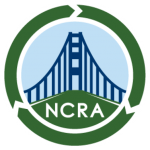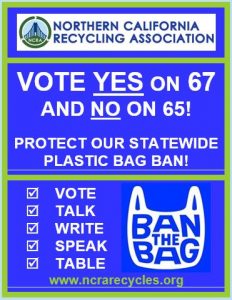By Arthur R. Boone, Center For Recycling Research and Total Recycling Associates
In late January and early February, the CalRecycles leaders and Graciela Castillo-Kriegs from the governor’s office held a series of meetings in the Governor’s office council room on topics related to the bottle bill.
The department sees it has a “structural deficit” which is paying out more than comes in and is searching for ways to change that. What is not on the table is reducing staff (grumpy looks when I suggested that), better police work on out-of-state imports (they think they’re catching lots of the crooks), improved auditing of the money in/money out chain to prevent graft and corruption in a one billion dollar cash flow operation (despite some very polite language from one person from the Can Manufacturers Institute saying that “the department has less than a 100% auditing function.” The idea of taking the $100 per day fines that the non-compliant grocery stores were paying to support CZ recyclers went unappreciated.
The elephants in the room, largely unnoticed (although my hearing is sufficiently poor in large rooms like this with no audio amplification that I missed a lot) were the large benefits given to curbside programs ($129 million per year) and other programs gifted by the legislature when reported redemption rates were much lower. These are now sacred cows not to be messed with.
There’s an old saw in Sacramento that if you’re not at the table, you will be part of the lunch. This was clear towards the end of the fifth session when everyone jumped on the idea of holding back some of the redemption fees to large collectors who sell more than 100 pounds (or some other number) of anything at a time; since they’re not the consumers of those volumes, it’s not their nickel that is being removed from the table. Interesting to me, coming from Oakland where the indigenous poor are major collectors, those folks were not at the table in any room filled with suits and white people.
My biggest disappointment (since I expected the suits to champion the status quo) came towards the end of the fifth session when the Pepsi spokesman asked what had become of a previous request from stakeholders (August 2016 by his reckoning) that the department assess what is going on in other states and countries with deposit legislation. Christine Hironaka, CALRECYCLES’ Assistant Director of Policy Development, who was also overseeing the speakers’ roster, said in an off-hand way that “a deposit system is a good way to get high collection rates,” and let it go at that. Six months and 700 staffers and they can’t do any better than that? Not “We have a twenty page report with ten things we’re never done here in California for consideration.” Unless staff pays attention to your input, why go to these meetings? Unless you’re paid, of course, to make sure nothing inimical to your employer’s interests is being considered. But that was, to me at least, a real kissoff to the people who care.
In my opinion, real reform of the bottle bill as currently practiced in California will not come from the department or the Governor’s office; it will come from the little people of the state and their advocates who like to drink covered beverages and want their nickels back. But I also thought that some of the fat cats in the room are tired of all the talk and a ready to support some major changes. As one old-timer remarked, “The bottle bill was passed in 1986; that’s a generation ago; maybe it’s time for some new ventures.” Not from the people in that room unless we start all over again.
Arthur R. Boone is a former NCRA president and was many years a boardmember; he was not re-elected in 2017 and did not identify himself as a NCRA spokesperson at these meetings.

